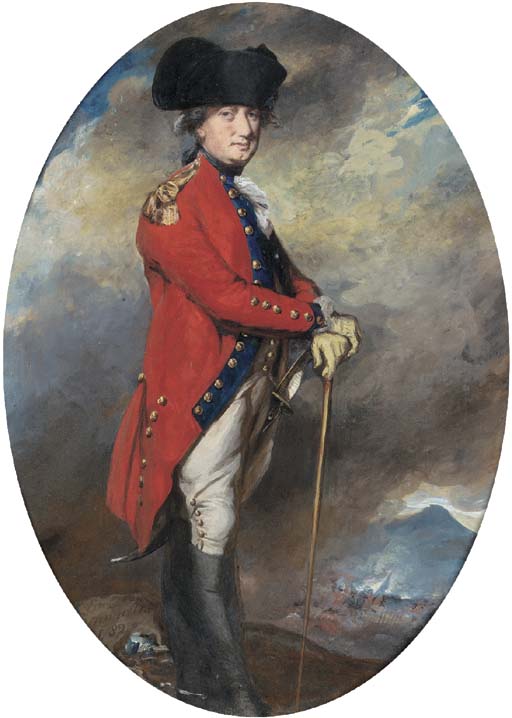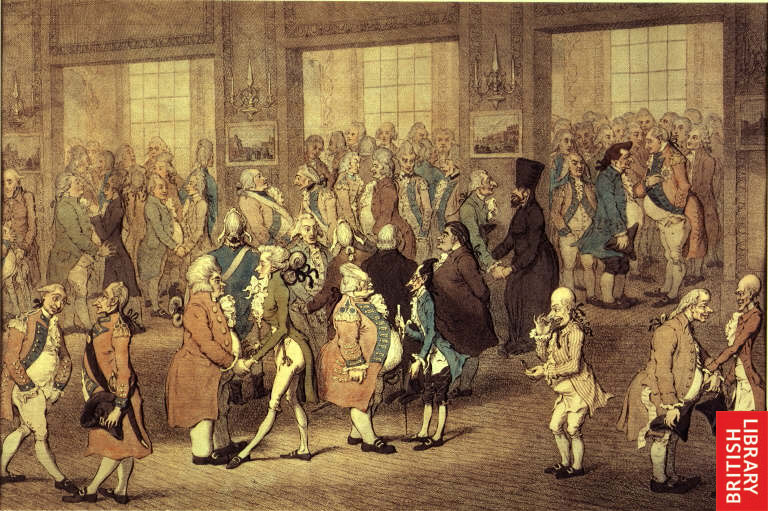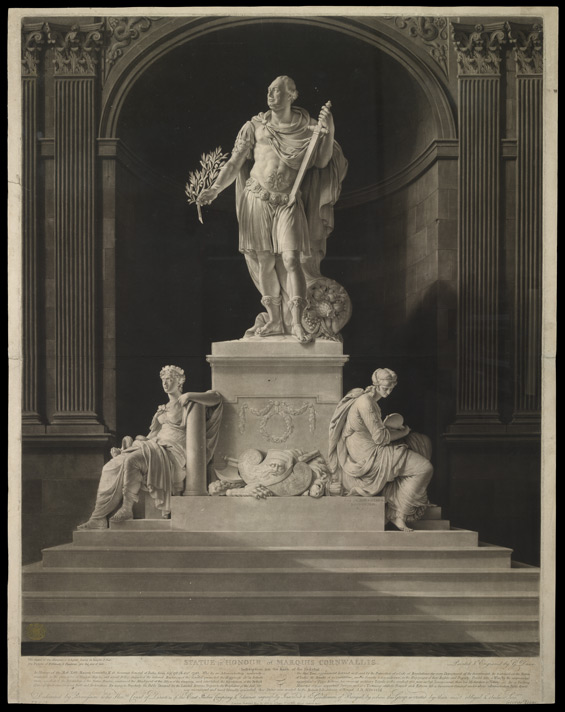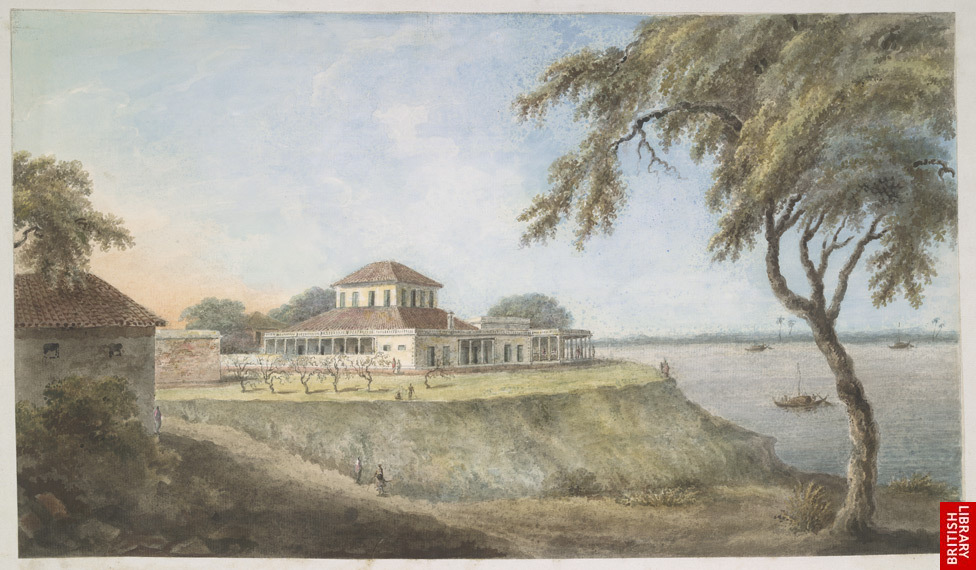

Tipu Sultan's nemesis, Lord Cornwallis-- fresh from his American defeat, in this portrait painted in 1782
Source:
http://www.christies.com/LotFinder/search/LotDetail.asp?sid=&intObjectID=3928380&SE=CMWCAT04+225509+%2D459059764+&QR=M+1+41+Aqc0000900+202045++Aqc0000900+&entry=india&SU=1&RQ=True&AN=42
(downloaded: May 2002)
"Daniel Gardner (1750-1805). Portrait of Charles, 1st Marquis Cornwallis (1738-1805), small full-length, in uniform, leaning on a cane, in a landscape with a battle beyond. Inscribed and dated 'Earl/Cornwallis/1782' (lower left); pencil, pastel and bodycolour, oval; 35½ x 26 in. (90.2 x 66 cm.).
Lot Notes: The sitter was the sixth child and eldest son of the 1st
Earl Cornwallis. In 1776 he sailed for America, in comand of seven
regiments
of infantry, to reinforce the English Army there. He displayed
considerable
military ability and achieved many notable successes during the
American
war of Independence, before being finally defeated and forced to
surrender
at Yorktown on 19 October 1781. He went on to become Govenor-General
and
Commander-in-Chief in India from 1786 until 1793, during which time he
was created Marquis Cornwallis in 1792. He was Viceroy and
Commander-in-Chief
in Ireland from 1798 to 1801. During a return trip to India in 1805 for
peace negotiations with Scindia and Holkar he was taken ill and died on
the 5th October aged sixty-six."


*Statue in Honour of Marquis Cornwallis, an aquatint by George Dawe, 1803* (BL)

Source: ebay, May 2006
== Indian Routes index == Indian Routes sitemap == Glossary == FWP's main page ==